Simon Hilbourne’s research employs advanced techniques such as photo identification and tissue sampling to track the movements and feeding patterns of oceanic manta rays. It highlights the critical role of Fuvahmulah Atoll in the Maldives and the impact of Sri Lankan fisheries on these endangered species.
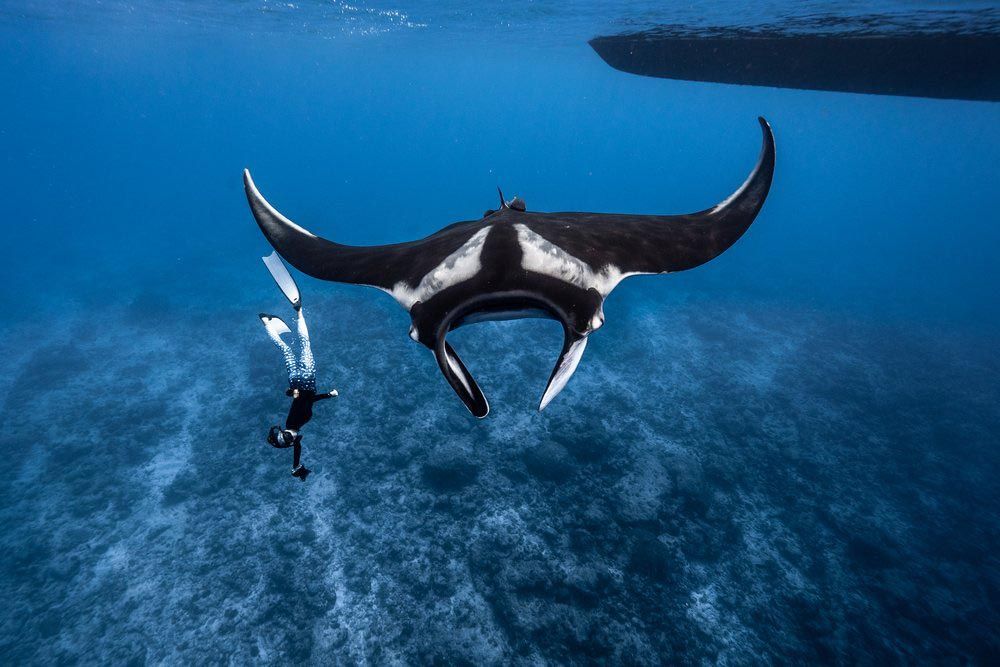
The Maldives hosts the world’s third-largest population of oceanic manta rays. – Simon Hilbourne
Introduction to Oceanic Manta Rays
The oceanic manta ray (Mobula birostris) stands as the largest of all ray species, reaching a remarkable disc width of up to 700 cm in some cases. Known for their impressive size and graceful swimming patterns, these rays are primarily found in the open ocean, far from coral reefs. They dive hundreds of metres into the deep scattering layer to feed on zooplankton, which forms their main diet. Unlike their reef-dwelling relatives, oceanic mantas visit cleaning stations less frequently, reflecting their more pelagic lifestyle.

Oceanic Manta Ray Mobula birostris has been assessed for The IUCN Red List of Threatened Species in 2019. Mobula birostris is listed as Endangered under criteria A2bcd+3d.
Despite their grandeur, oceanic manta rays face significant conservation challenges. They are listed as Endangered on the IUCN Red List as of 2019, with major threats including targeted fisheries driven by the high value of their gill plates and potential impacts from climate change affecting their zooplankton prey.
Key Features of Oceanic Manta Rays
- Disc Width: Average 400-500 cm, Maximum 700 cm
- Weight: Up to 2,000 kg
- Lifespan: Approximately 40 years
Identification Marks:
- Dorsal Markings: White shoulder markings that form two mirror-image right-angled triangles, creating a distinctive ‘T’ shape.
- Ventral Spots: Clustered around the lower abdominal region, if present.
- Shading: Black shading on the inside of the mouth and cephalic fins, and the trailing underside edge of pectoral fins.
- Tail Features: Knob-like bulge housing a vestigial spine at the base of the tail.
- Gill Plates: Large and uniformly black with fused lateral lobes and a rounded terminal lobe. Occasionally, they are completely white.
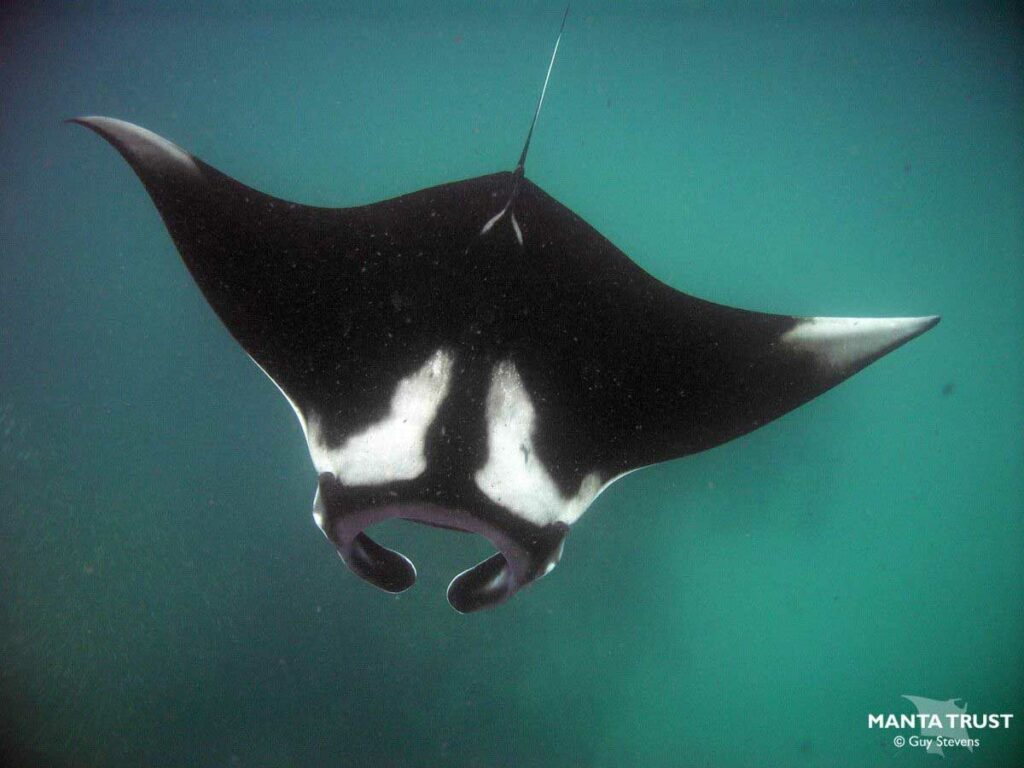
Oceanic manta ray (Mobula birostris). Image Courtesy: Manta Trust / © Guy Stevens
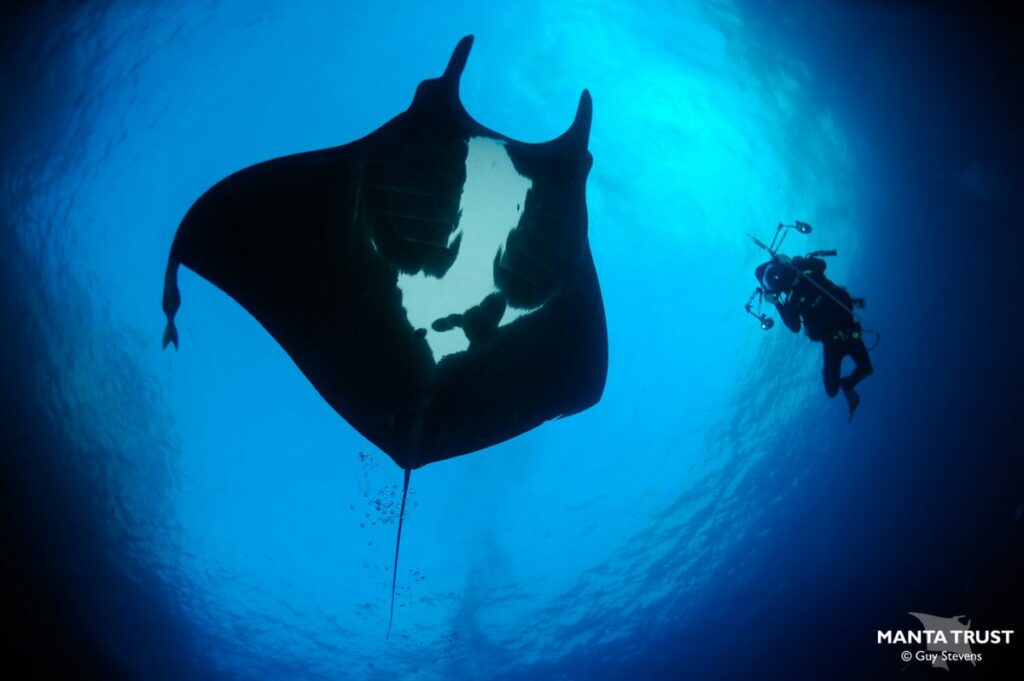
Oceanic manta ray (Mobula birostris). Image Courtesy: Manta Trust / © Guy Stevens
Simon Hilbourne: The Visionary Behind the Research
Background and Expertise
Simon Hilbourne, the Project Leader for the Oceanic Manta Ray Connections initiative, has dedicated his career to marine conservation. His journey began in Thailand, where he learned to scuba dive and quickly developed a passion for marine life. After obtaining his Divemaster qualification and working as a dive instructor on the Great Barrier Reef, Simon realised that his true interest lay in marine animals rather than tourism.
Simon pursued a marine biology degree in Southampton, UK, and subsequently moved to South-East Asia to volunteer in whale shark research in the Philippines. In 2016, he joined the Manta Trust, contributing to the Maldives Manta Conservation Programme (MMCP) and expanding his role to encompass scientific research and media production. His commitment to marine conservation is further demonstrated by his founding of Fish Free February, a UK-based non-profit aimed at promoting awareness and reducing seafood consumption.

Simon Hilbourne, the Project Leader of the Oceanic Manta Ray Connections
Current Work and Achievements
Simon’s work focuses on the Maldives archipelago, known for its extensive coral reefs and rich marine biodiversity. The Maldives is home to the world’s largest population of reef manta rays, with over 6,000 individuals documented. Recently, the Maldives was recognized as hosting the third-largest population of oceanic manta rays, highlighting the significance of this region for these endangered species.
The Oceanic Manta Ray Population in the Maldives
Fuvahmulah Atoll: A Crucial Habitat for Oceanic Manta Rays
Fuvahmulah Atoll, located in the southern Maldives, plays a pivotal role in the life cycle of oceanic manta rays. This small, four-kilometre-long island is renowned for its tiger shark aggregations and attracts a variety of large marine species, including oceanic manta rays. Approximately 85% of oceanic manta ray sightings in the Maldives occur around Fuvahmulah.
Fuvahmulah’s unique marine environment has earned it recognition as a UNESCO Biosphere Reserve and an ‘Important Shark and Ray Area.’ Simon Hilbourne’s initial visit to Fuvahmulah in 2018 coincided with a surge in tourism interest. Since then, the island has become a popular destination for divers, drawn by its abundant marine life and seasonal manta ray sightings.
The Fuvahmulah Biosphere Reserve in the southern Maldives is renowned for its incredibly diverse coral ecosystems. This atoll features a rich array of biodiversity across its coral reefs, lakes (known locally as kilhi), mangroves, and wetlands. The reefs support significant populations of sharks, including tiger, thresher, and whale sharks, and boast an impressive fish diversity with over 1,200 species recorded. Additionally, the biosphere reserve is crucial for migratory birds, hosting over 167 species, including five endemics. The island’s geology reveals a unique shallow bowl shape with underlying bedrock of hardened coral and sand conglomerates, and its surface includes two small linked sub-catchments.
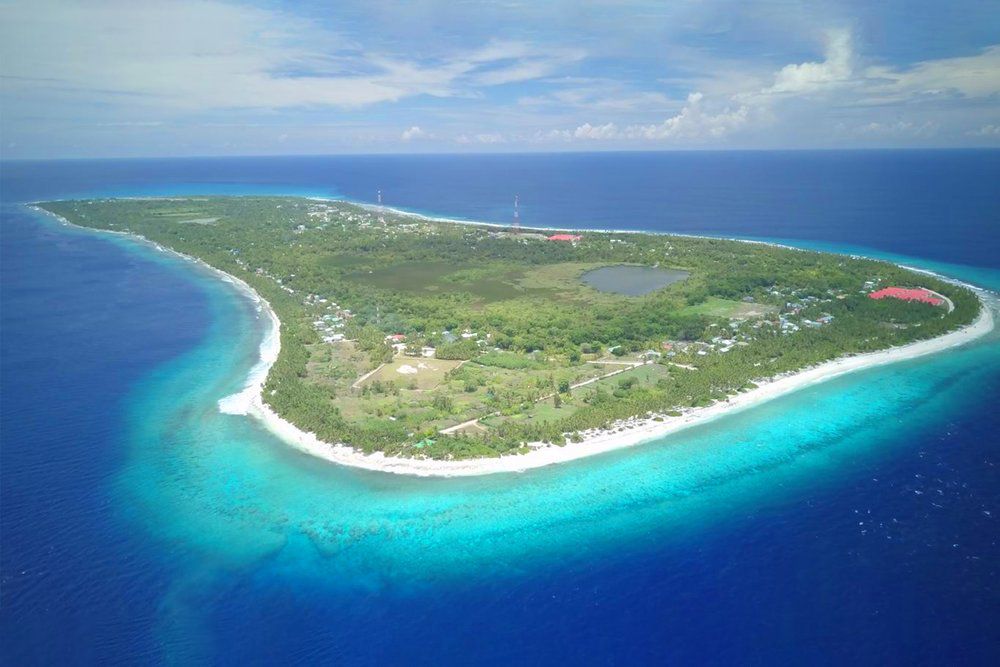
UNESCO Biosphere Reserve: Fuvahmulah’s diverse coral ecosystems and rich biodiversity make it a crucial conservation area.
Research Methods and Collaboration
Simon’s research employs a range of methods to study the oceanic manta ray population in the Maldives. Key techniques include:
- Photo Identification: Used to track individual manta rays and monitor their movements.
- Satellite Tagging: Provides data on the manta rays’ migration patterns and movements.
- Tissue Biopsy Sampling: Collects samples for genetic and stable isotope analysis to understand feeding habits and connectivity.
Collaboration with Blue Resources Trust in Sri Lanka is a crucial component of the research. This partnership involves collecting tissue samples from oceanic manta rays landed in Sri Lankan fisheries, allowing for comparative analysis with samples from the Maldives.
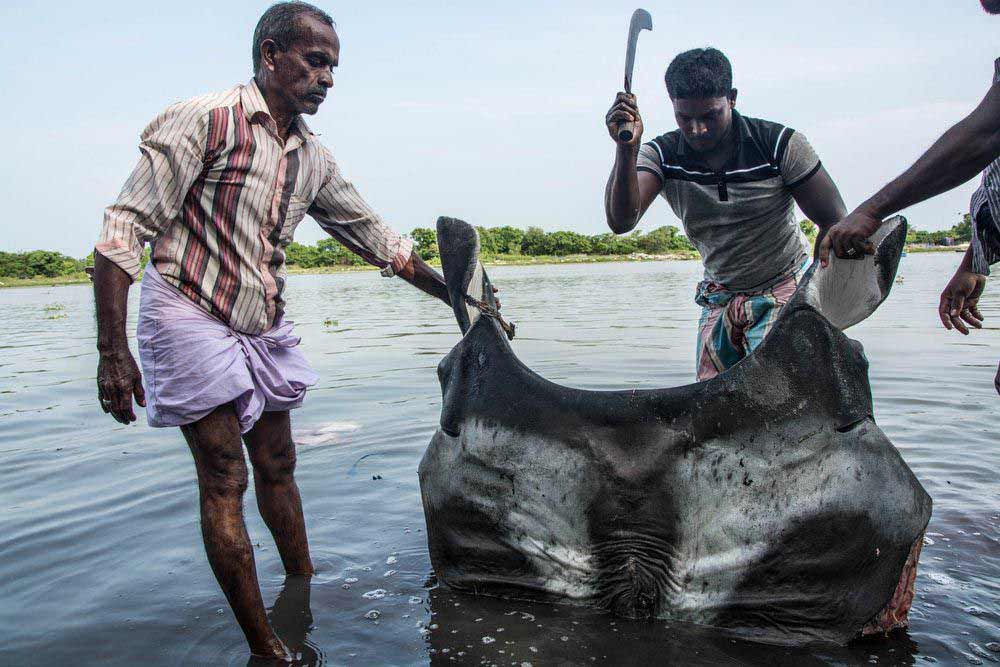
Despite significant successes in conservation at the Maldives, Sri Lanka’s extensive mobulid fisheries (Manta and devil rays, known collectively as mobulids) land up to 1,000 manta rays annually. This highlights the urgent need for regional cooperation to tackle the conservation challenges faced by manta ray populations.
The Importance of Understanding Manta Ray Connectivity
Why Connectivity Matters
Understanding the connectivity between oceanic manta rays in the Maldives and Sri Lanka is essential for effective conservation. Oceanic manta rays are listed as Endangered due to threats from fisheries, and Fuvahmulah Atoll has been identified as a critical habitat for a significant population of these rays. However, the presence of large-scale mobula fisheries in neighbouring Sri Lanka poses a threat to this population.
The Maldives’ oceanic manta rays migrate, entering international waters where they are vulnerable to foreign fisheries. By understanding the connections between populations in the Maldives and Sri Lanka, conservation efforts can be better targeted to protect these rays throughout their migratory routes.
Aims and Objectives of the Project
The Oceanic Manta Ray Connections project has several key aims:
- Document the Population: Continue monitoring the oceanic manta ray population in the Maldives through field research in Fuvahmulah.
- Collect and Analyze Tissue Samples: Gather tissue biopsy samples to study feeding ranges and population connectivity.
- Collaborate with Sri Lankan Researchers: Work with Blue Resources Trust to collect and analyse samples from Sri Lankan fisheries.
Research Techniques and Analysis
Photo Identification and Tissue Biopsies
Photo identification is a primary method for tracking manta rays, allowing researchers to recognize individual rays based on their unique markings. Tissue biopsy samples provide valuable data on the rays’ diet and genetic makeup. These samples are analysed for stable isotopes and genetic markers, offering insights into their feeding habits and population structure.
Stable Isotope and Genetic Analysis
- Stable Isotope Analysis: Measures carbon and nitrogen isotopes in tissue samples to determine the manta rays’ feeding ranges. By comparing isotopic signatures from Maldives and Sri Lankan samples, researchers can identify potential overlap in feeding areas.
- Genetic Sequencing: Utilises next-generation sequencing to analyse small amounts of DNA, helping to determine effective population size and connectivity between the two regions.
Seasonal and Spatial Patterns
Oceanic manta ray sightings in the Maldives are seasonal, with peak sightings typically occurring around March and April. Outside this period, sightings are rare and dispersed across the country. The research relies on an extensive network of resort marine biologists, dive centre staff across the Maldives including local islands and resorts, and the public to report sightings and provide photographs.
Conclusion
The Oceanic Manta Ray Connections project represents a crucial effort to understand and protect the endangered oceanic manta ray species. By investigating the connectivity between populations in the Maldives and Sri Lanka, the project aims to inform conservation strategies and policy decisions. Continued research and collaboration are essential to ensure the survival of these magnificent creatures.
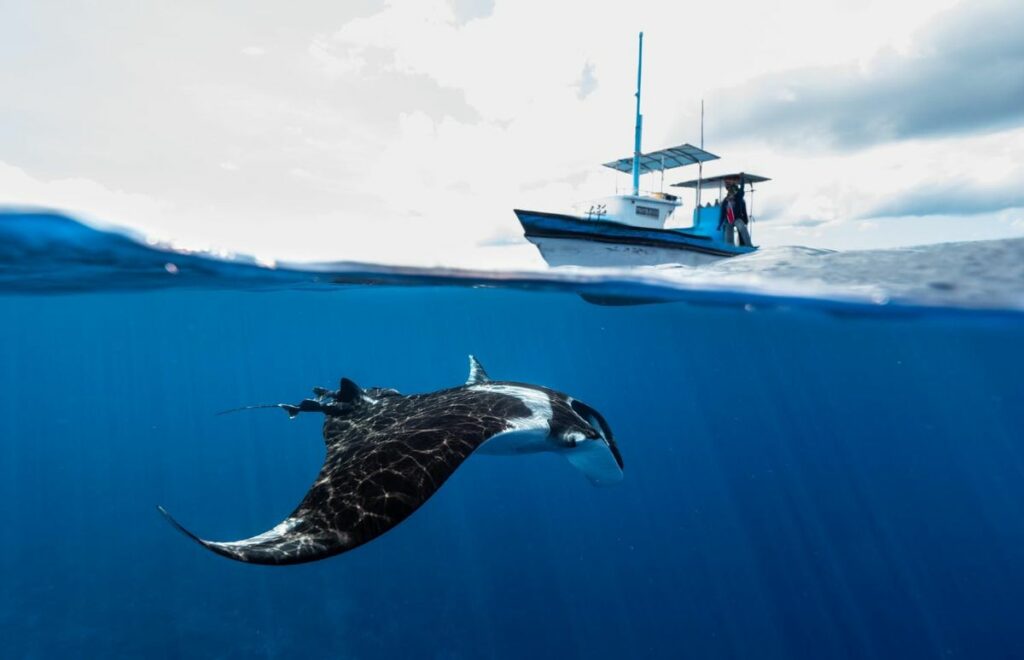
The Maldives is home to the world’s largest population of reef manta rays and the third largest population of oceanic manta rays. Approximately 85% of oceanic manta ray sightings in the Maldives occur around Fuvahmulah Island. Oceanic manta rays around Fuvahmulah Island face high levels of endangerment due to environmentally harmful fishing practices in Sri Lanka.
Key Takeaways
- Oceanic manta rays are the largest ray species, with a significant population in the Maldives and Sri Lanka.
- Fuvahmulah Atoll is a key site for studying oceanic manta rays in the Maldives, with sightings peaking around March and April.
- Simon Hilbourne’s research employs advanced techniques to analyse population connectivity and feeding habits.
- Collaboration with Sri Lankan researchers is vital for comprehensive conservation efforts.
Through these efforts, Simon Hilbourne and his team are making significant strides in marine conservation. By bridging the gap between populations in different regions, the project seeks to protect oceanic manta rays and ensure their continued presence in our oceans.
___________________________________________________________________
Images by: Simon Hilbourne and Guy Stevens
Contact: Simon Hilbourne
Maldives Oceanic Manta Project Leader
The Manta Trust / Maldives Manta Conservation Programme
Website: https://www.mantatrust.org
__________________________________________________________________
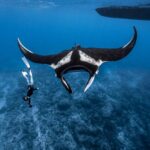
Leave a Reply